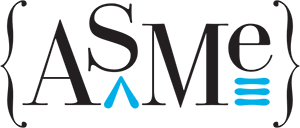- Home
- About
- Membership
- News and Events
- ASME NEXT
- ASME Awards
- Job Board
ASME Guidelines for Editors and PublishersPublished April 15, 2015The true value of a print or digital magazine brand lies in its relationship with its readers. The unique relationship between magazine media and media consumers is founded on the reader’s trust in the magazine’s editorial integrity and independence. The purpose of the ASME Guidelines for Editors and Publishers is to sustain that trust by articulating basic principles for the conduct of magazine journalists. The guidelines also summarize industry practices, drawn from those principles, concerning editorial content and advertising and include information about federal regulations relevant to magazine media. In a rapidly changing media marketplace, no one set of guidelines can answer every question. The ASME Guidelines address only the critical challenges encountered by print and digital journalists working in today’s advertising-supported media. The basic principles that inform the guidelines, especially transparency, are also applicable to other forms of magazine media, including conferences and events. First published in 1982 as a service to ASME members, the ASME Guidelines are frequently revised to address emerging concerns but can always be summarized in one sentence: Don’t deceive the reader. For help with the guidelines or for information about best practices in print and digital media, call ASME at 212.872.3737 or email [email protected]. The Primary Responsibility of the Editor Is to Serve the Interests of the Reader Editors should never hesitate to publish information their readers have a right to know. Editors should acknowledge and correct mistakes quickly and clearly. Editors should not permit advertiser influence to compromise editorial integrity. The difference between editorial content and marketing messages, including native advertising, must be transparent. Avoid Conflicts of Interest Editors should not accept favors or gifts intended to influence editorial coverage. Editors should not hold a financial interest in any company they cover. Editors should avoid working with and reporting on the same marketers. Conflicts of interest, including personal relationships that could influence editorial coverage, should be disclosed to the reader. These practices are drawn from the foregoing principles: Differentiate Editorial Content and Advertising Regardless of platform or format, the difference between editorial content and marketing messages should be clear to the average reader. On websites populated by multiple sources of content, including user-generated content, aggregated content and marketer-provided content, editors and publishers must take special care to distinguish between editorial content and advertising. Advertisements that mimic the “look and feel” of the print or digital publication in which they appear may deceive readers and should be avoided. Print and digital advertisements that resemble editorial content should be identified as advertising in compliance with Federal Trade Commission regulations. 73 FTC 1307 (1968) states that when a marketing message “uses the format and has the general appearance of a news feature and/or article for public information which purports [to be] independent, impartial and unbiased . . . the Commission is of the opinion that it will be necessary to clearly and conspicuously disclose it is an advertisement.” The United States Postal Service also requires the labeling of editorial-like print advertisements. The USPS Domestic Mail Manual states that “under 18 USC 1734, if a valuable consideration is paid, accepted, or promised for the publication of any editorial or other reading matter in a Periodicals publication, that matter must be plainly marked ‘advertisement.’” To ensure that such labeling is clear and conspicuous, ASME recommends the use of terms such as “Advertisement,” “Advertising” and “Special Advertising Section” for print advertising units and further recommends that these terms should be printed horizontally and centered at the top of each advertising unit in readable type. ASME also recommends that native advertising on websites and in social media should be clearly labeled as advertising by the use of terms such as “Sponsor Content” or “Paid Post” and visually distinguished from editorial content and that collections of sponsored links should be clearly labeled as advertising and visually separated from editorial content. Do Not Trade Editorial Coverage for Advertising No product should receive editorial endorsement in exchange for payment. Product placement that indicates editorial endorsement should be avoided. Advertisements should not be integrated into editorial content. Editorial coverage of a person or product should not be intentionally positioned adjacent to advertising related to the same person or product. Do Not Submit Editorial Content to Advertisers for Approval In accordance with the joint ASME-MPA resolution against pre-publication review, editorial content of any kind should not be submitted to advertisers for approval. Disclose E-Commerce Partnerships E-commerce partnerships should be disclosed to the reader. E-commerce options should be visually distinguished from editorial content. To view the FAQ about the ASME Guidelines for Editors and Publishers, click here. To view the previous edition of the guidelines, click here. To view the original ASME Guidelines for Special Advertising Sections, published in 1982, click here. About ASME The American Society of Magazine Editors is the principal organization in the United States for the editorial leaders of magazines and websites. Founded in 1963, ASME strives to defend the First Amendment, support the development of journalism and promote the editorial integrity of print and digital publications. ASME sponsors the National Magazine Awards for Print and Digital Media in association with the Columbia Journalism School, conducts training programs for writers and editors and publishes the ASME Guidelines for Editors and Publishers. |
